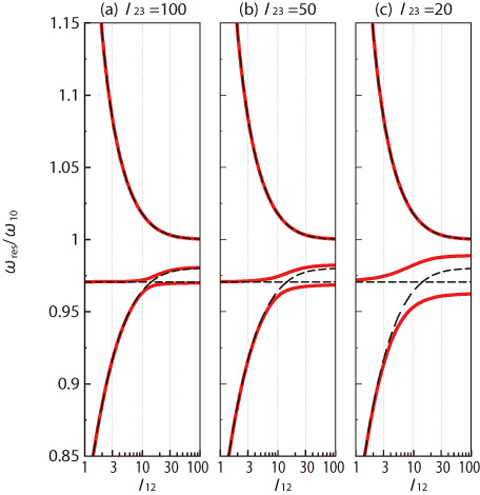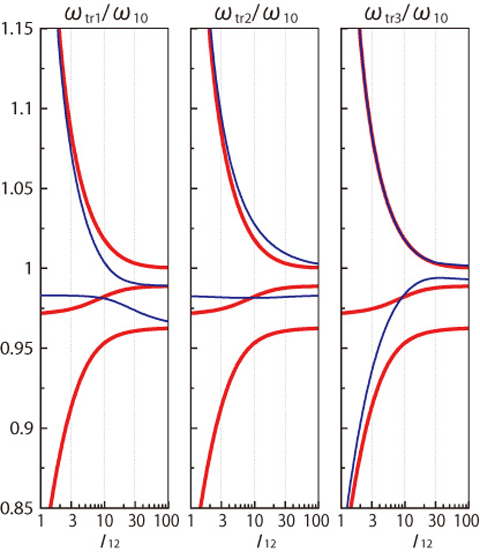
Fig.10-15 Avoided crossing in resonance frequencies

Fig.10-16 Transition frequencies in the avoided crossing region
Bubbles are ubiquitous presences, appearing in many places around us. In nuclear engineering, bubbles emerge through, for example, boiling in an atomic reactor and cavitation in nuclear plants and accelerators. Bubbles that emerge through cavitation will pulsate violently and sometimes damage piping by emitting a high-speed liquid jet. In a cavitating liquid, a huge number of such bubbles interact with each other through sound, and hence the bubbles constitute a kind of system of interacting oscillators, that is, a "coupled oscillator system."
We have recently been studying the dynamics of multiple bubbles as a coupled oscillator system and have discovered a strange phenomenon "avoided crossing." Avoided crossings have been studied in many research fields including quantum chemistry and chaos dynamics, and have been found in several physical systems involving multiple eigenvalues (e.g., eigenfrequencies or Lyapunov exponents). In the parameter regions where an avoided crossing appears, two eigenvalues first approaching each other as a system parameter varies change their paths abruptly and swerve away from each other. In that region, an abrupt state change of the system also takes place.
In the case of bubbles we have considered, avoided crossings appear in their resonance frequencies. The red lines in Fig.10-15 denote the avoided crossing resonance frequencies. We, carefully examining this result, have found that in the avoided crossing region, the transition frequencies, at which the pulsation phase of a bubble inverts, cross (Fig. 10-16) and the bubbles act as if they exchange their oscillation states with each other. Our paper is the first to report such behavior of bubbles. We think that this finding uncovers a hidden complexity of bubbles, and that this is useful for understanding the very complicated dynamics of cavitation bubble clusters. This work was partly supported by MEXT through a Grant-in-Aid for Young Scientists (B) (No. 17760151).
<Previous: 10-8 | Next: 11 Scientific & Technical Development for Nuclear Nonproliferation >